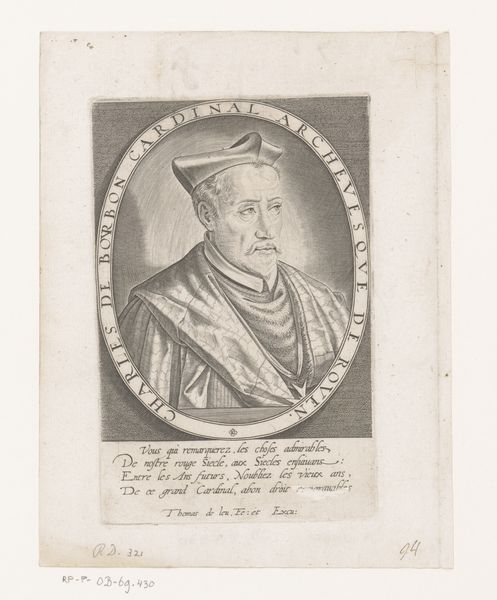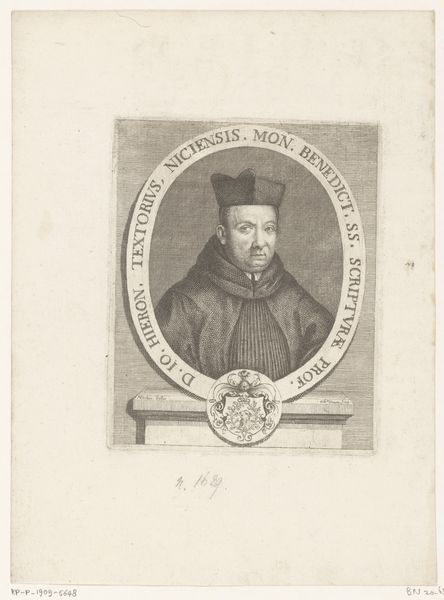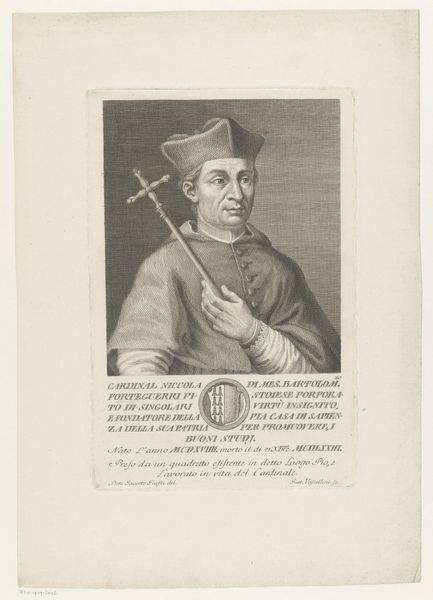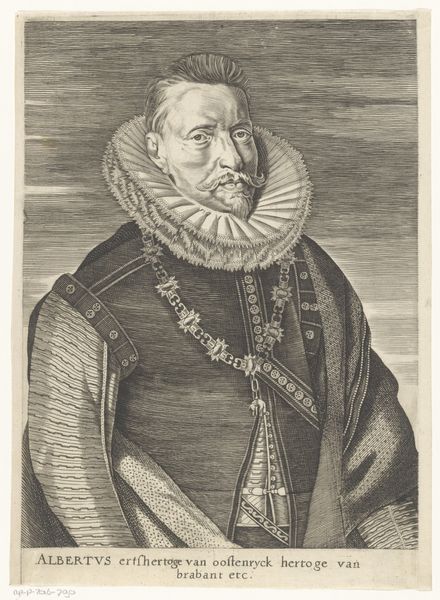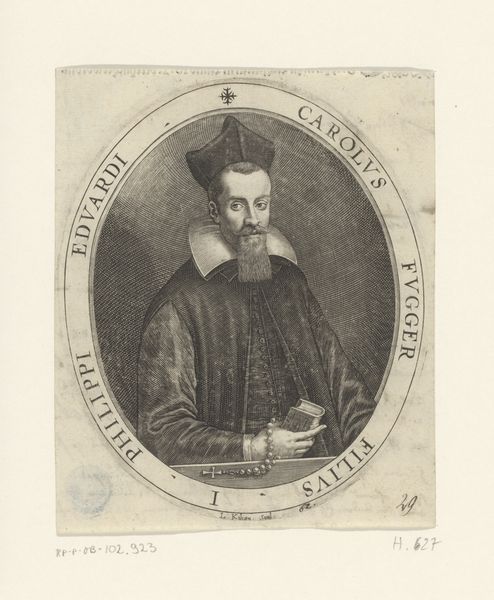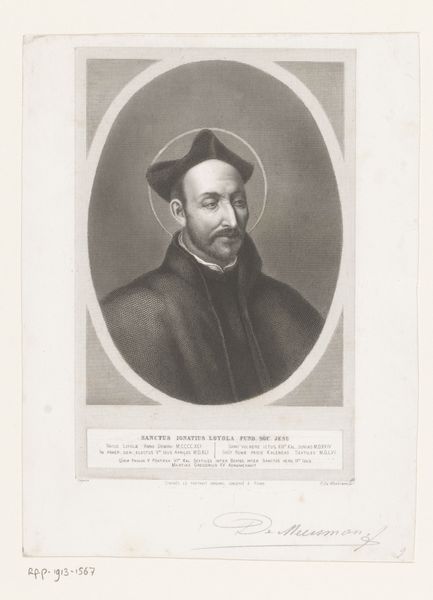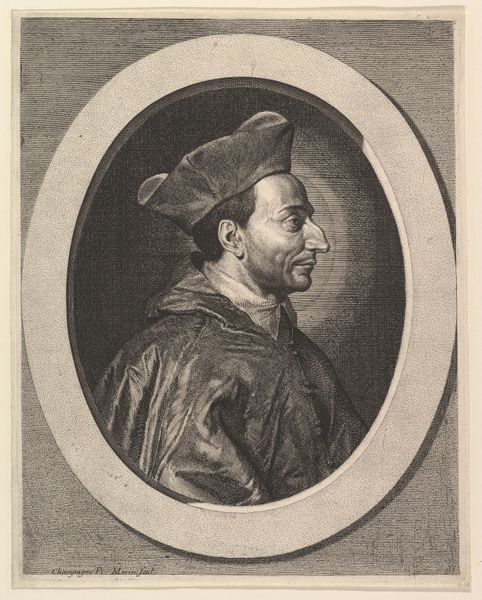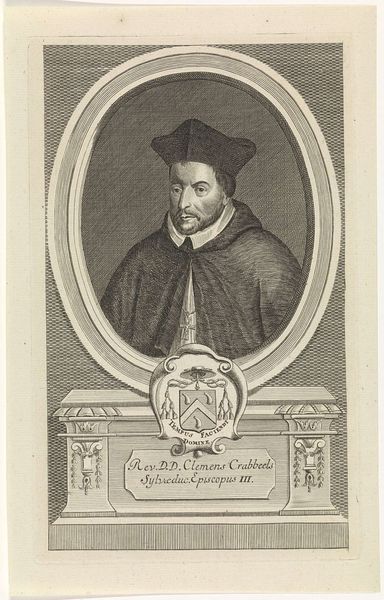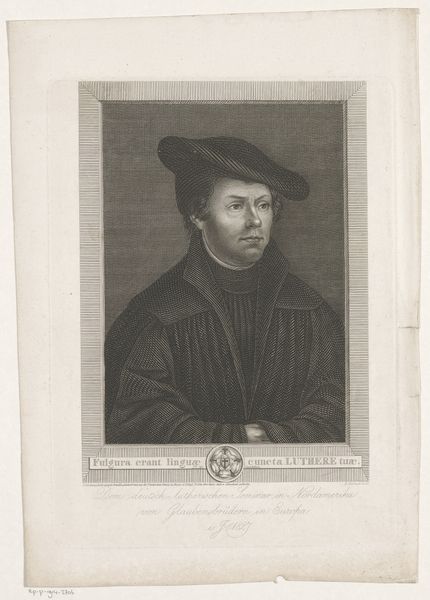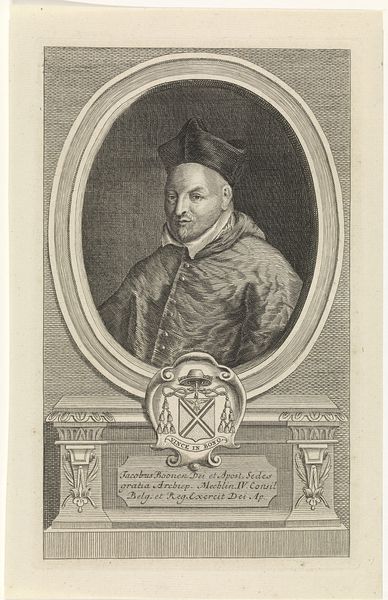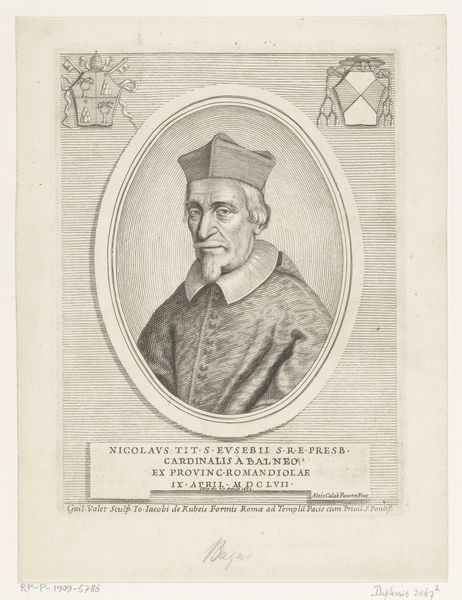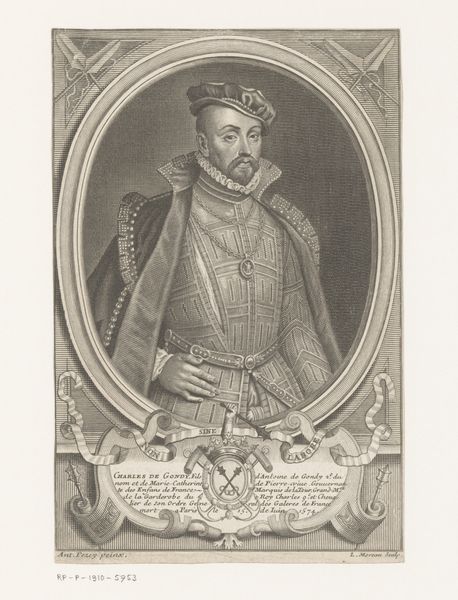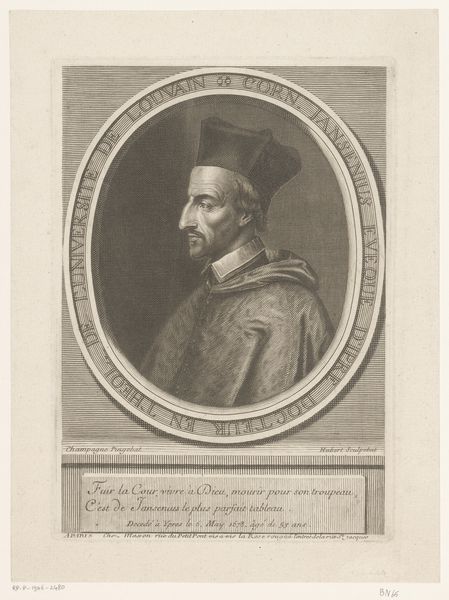
engraving
#
portrait
#
baroque
#
figuration
#
line
#
history-painting
#
academic-art
#
engraving
Dimensions: height 305 mm, width 206 mm
Copyright: Rijks Museum: Open Domain
Editor: So, this is a portrait of Henri de Mesmes, Seigneur de Roissy, dating sometime between 1600 and 1667. It's an engraving by Michel Lasne, housed here at the Rijksmuseum. The detail is just incredible for an engraving, and his expression seems very controlled. What do you see in this piece? Curator: This engraving offers a glimpse into the representation of power and status in 17th-century France. Note how Lasne meticulously renders the sitter’s garments, specifically that elaborate ruff, emphasizing his wealth and social standing. This wasn't simply about capturing a likeness; it was about constructing a public image, sanctioned and perpetuated through printmaking. Who was this portrait for, and what purpose do you think it served? Editor: Presumably for display, to impress visitors with the family's importance. Was there a broader market for these kinds of portraits? Curator: Absolutely. Prints like this circulated widely, both within France and beyond. They were collected, displayed, and used to disseminate specific ideologies about power and authority. This portrait functions as a visual record, solidifying Henri de Mesmes’s place in history, but also reinforcing the hierarchical social structures of the time. The Latin inscription certainly elevates the sitter's status. How do you interpret its effect on the image? Editor: It adds an air of intellectualism and connects him to classical virtues, doesn't it? I hadn't thought about engravings being so political! Curator: Indeed. Analyzing the visual rhetoric and circulation of such images unveils the complex relationship between art, power, and social control in early modern Europe. Hopefully, it changes how you think about visual material produced throughout history. Editor: This has been a really insightful dive! Thank you!
Comments
No comments
Be the first to comment and join the conversation on the ultimate creative platform.
